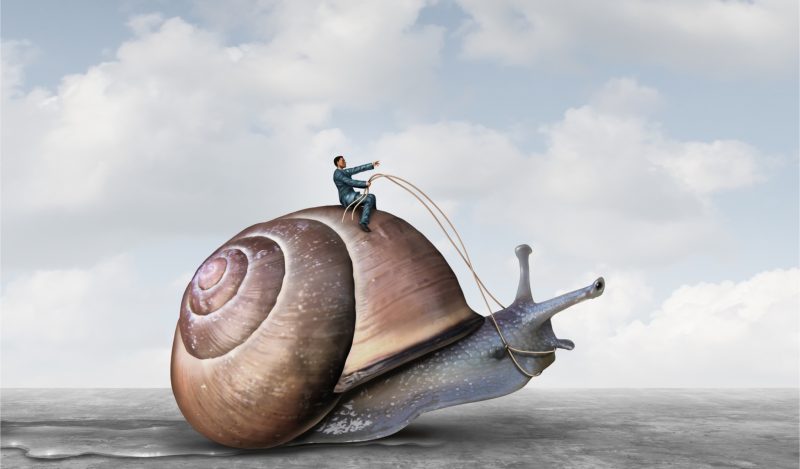With the emergency phase of the pandemic behind us, the Covid alarmists don’t have much material left to work with—but doomsaying abhors a vacuum.
Enter long Covid, the perfect object of fear because it can never be disproved. You can hold it responsible for any symptom you develop after the acute phase of the illness, whether weeks or years down the road. Tired? Long Covid. Forgot where you put your keys? Long Covid. Breathless after climbing a flight of stairs? Long Covid, no doubt. It’s an unfalsifiable diagnosis, a fearmonger’s wet dream.
If I sound flippant, it’s because the past two and a half years have left me just a tiny bit wary of the human propensity for panic. As we’ve all discovered, a panicked populace will accept—or rather, demand—any and all restrictions on basic rights and freedoms. If we allow long Covid to become the new panic button, these restrictions could stretch into an indefinite future.
For the record, I’m not suggesting that long Covid doesn’t exist. I don’t wish to dismiss the suffering of affected people. My beef isn’t with individuals, it’s with public health messaging that keeps pumping fear into an exhausted and confused populace that has lost the capacity for rational risk assessment. I’m suggesting that we put long Covid in perspective so it doesn’t become the next pretext for putting our lives on hold.
Media Magnification
We certainly can’t count on a balanced perspective from legacy media and the experts they enlist: fear generates clicks, retweets, and ad revenue. “There’s no one who is too young and healthy to not go on and get post-acute COVID syndrome,” says New York rehabilitation therapist David Putrino in Parade magazine, doing his part to ensure everyone stays scared.
In a New York Times article titled “This is really scary: kids’ struggle with long Covid,” National Institutes of Health researcher Avindra Nath warns of the impact of long Covid on children’s development. “They’re in their formative years,” he says. “Once you start falling behind, it’s very hard because the kids lose their own self-confidence too. It’s a downward spiral.”
One can’t help contrast this solicitude with the lack of media concern about the effect of school closures and long masking on child development. Just saying.
Long Covid alarmists also compete for airspace in the Twitterverse, with professional fearmonger Eric Feigl-Ding predictably leading the charge. From his May 20 tweet: “Let this sink in. A billion people could suffer long Covid in the next 3 years.” True to form, he can’t resist inserting some chest-beating into his scare story. “The burden of long Covid will likely be much higher than anyone imagined. And yet very few care enough to mitigate transmission. And that makes me sad.”
It’s not just health professionals who spit out such tweets. Software developer Megan Ruthven exhorts us to reactivate the stop-the-spread program of 2020, this time to “prevent hospital collapse due to long Covid.” For exactly how long? According to a dude called Xabier Oxale, as long as it takes. “Let’s look at Long Covid, and then, only then, you can assure that a strain is less severe. For that, you need months, even years. As they don’t know, cautionary principle must prevail. Covid Zero!” That’s right, folks. Covid Zero is back.
Then there’s Charlos, who decries the government’s inaction in the face of long Covid, which he dubs “the greatest mass disabling event in human history.” The ampersand-loving Mx. Charis Hill, meanwhile, points the guilt screws right at you and me. “You may be personally willing to risk an infection & Long Covid & the loss in financial stability that will cause. But what if you get Covid, give it to your spouse/child/parent/sibling, & they become permanently disabled? Because of you?”
If these Tweets don’t strike terror in your heart, you have only to read the June 7 blog post by the People’s Pharmacy. “Long Covid is common and scary!” reads the headline, followed by “long Covid is nasty!” in the subhead. Further along in the article, we learn that the “brain and body both react to Covid!” Not one to give up on exclamation marks, the author warns us again that “the body is also impacted!”
It’s time to slow the spin, I say. Let’s start with some numbers.
All over the map
Studies on the prevalence of long Covid have yielded wildly discrepant results, which alone should cast doubt on the scariest numbers. Some researchers estimate that fewer than 10% of Covid infections progress to long Covid, while others peg the rate at more than half. In children and adolescents, the reported prevalence swings even more widely—between 4% and 66%, according to a review of 14 studies. To make things still more confusing, long Covid symptoms can also occur after influenza, though with less frequency.
So what and whom are we to believe? When in doubt, it never hurts to look at large, well-controlled studies, which by design carry the greatest statistical weight. A UK analysis of over 50,000 subjects, both with and without a history of Covid infection, suggests that long Covid may not live up to its cataclysmic media portrayal. In its report on the study, the UK’s Office of National Statistics states that 5% of previously infected subjects reported at least one common long Covid symptom 12 to 16 weeks later. The twist: “[The] prevalence was 3.4% in a control group of participants without a positive test for COVID-19, demonstrating the relative commonness of these symptoms in the population at any given time.”
There it is, straight from the ONS: at any point in time, more than 3% of random people on the street experience the nonspecific symptoms that characterize long Covid, such as fatigue, headaches, and poor concentration. A similar picture emerged from a controlled Danish study of pediatric long Covid, involving over 44,000 subjects and published in The Lancet Child & Adolescent Health. A substantial minority of previously infected children reported long Covid symptoms—but so did their non-infected counterparts, at a lower rate deemed “statistically significant but not clinically relevant.” While this doesn’t disprove the existence of long Covid, it does invite skepticism about the sky-high prevalence figures reported in some studies.
Symptoms attributed to long Covid are also all over the map, from hallucinations and hair loss to menstrual changes and penile shrinkage. Allergic reactions, peeling skin, joint pain… the list goes on. But here’s the thing: we can’t conclusively pin any of these symptoms on long Covid. As a McGill University report on long Covid symptoms concedes, “Noticing something after getting sick with a virus does not automatically imply that it was caused by the virus.” In a nutshell, long Covid remains a slippery eel, adept at eluding our grasp.
What we don’t know
There’s something else we don’t know, and it’s the hottest of hot potatoes: whether situational or psychological factors could explain some long Covid symptoms. Relax, people. I’m not suggesting it’s all in the head. All I’m saying is that a symptom can spring from more than one source, and experts agree.
A Johns Hopkins expert report on the origin of long Covid symptoms allows that mental health problems can arise from “unresolved pain or fatigue, or from post-traumatic stress disorder (PTSD) after treatment in the intensive care unit.”
Along similar lines, a Globe and Mail article notes the challenge of untangling “which [post-Covid symptoms] can be attributed to long COVID and which are the result of hospitalization, since a lengthy stay can itself cause a host of physical and mental health problems.”
I repeat: I am not negating the existence of long Covid. I am not denying it can cause pain and suffering. I support research and public investment into the phenomenon. I’m simply saying that we need to drop the sky-is-falling pronouncements and replace them with more balanced and hopeful messaging.
Above all, we need to avoid turning long Covid into the new Scary Thing, the monster in the closet that leads a frightened public to demand longer and harsher restrictions on living. No level of protection is worth going through that exercise again.
Join the conversation:


Published under a Creative Commons Attribution 4.0 International License
For reprints, please set the canonical link back to the original Brownstone Institute Article and Author.









